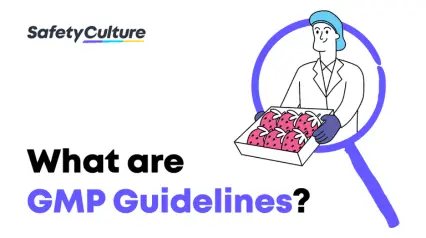What is a Layered Process Audit?
A Layered Process Audit (LPA) is a quality management system in manufacturing designed to add layers of protection against critical risks such as rework, customer complaints, costly product recalls, and reputational damage. Instead of the final production result, it focuses on verifying how the products are made and manufactured. With layered process audits, different “layers” of auditors, including staff and employees, are assigned the exact same set of audits to ensure that high-risk steps in production do not deviate from set specifications.
It is also a structured and systematic audit of a process or system. LPAs are conducted by trained auditors who use a standard checklist to assess compliance with process requirements. They are an essential part of quality control and can help improve safety, efficiency, and productivity.
LPAs are used in a variety of industries, including manufacturing, healthcare, and construction. The main benefit of an LPA is that it can help identify process weaknesses and root causes of problems so they can be addressed. Additionally, LPAs can help ensure compliance with process requirements and improve process performance over time.
Why is it Important?
Layered process audits (LPAs) are important because they help ensure that manufacturing processes are effective and efficient. LPAs are conducted at different levels within a company, from the shop floor to senior management. The purpose of an LPA is to identify waste, inconsistencies, and opportunities for improvement within a manufacturing process.
LPAs also help companies to identify and correct problems before they cause any real damage. By ensuring that processes are being followed correctly and that quality standards are being met, LPAs help ensure that their products and services are up to par.
Benefits
A layered process audit aims to verify that the organization’s process assurance system is effective in preventing, detecting, and correcting process non-conformities.
LPAs can be beneficial for companies because they provide an objective assessment of the company’s quality management system. Additionally, LPAs can help identify areas of improvement and provide recommendations on how to improve the system.
Some of its benefits include the following:
- It’s an effective way to improve quality and prevent defects.
- By identifying potential problems early on, LPAs can help save time and money in the long run.
- Builds a culture of quality in an organization by promoting continuous improvement.
- Helps reduce product variations
- Facilitates greater discipline in following standard work procedures
- Decreases wasted material, scrap, rework, and rejects
- Assist the production staff’s “buy-in” to the quality culture
- Establishes better communication between operators and leadership
- Provides greater efficiency with cost reductions
Overall, LPAs can help companies improve their quality management systems and ensure they are meeting their customer’s expectations.
Layered Process Audit Program Framework
There are a few key steps to follow when starting an LPA program:
1. Process Verification
The first step of layered process audits starts by verifying if processes and standards are being carried out rather than searching for problems and checking products or systems.
Therefore, by comparing the operator’s actions against the standard work instructions or Standard Operating Procedures (SOP), you are verifying whether a particular action adheres to the requirements in the workspace or department where the activity is taking place.
2. Employee Engagement
Engaging your employees in the process is critical to its success. Be sure to communicate the purpose of the program and what is expected of them. Additionally, make sure they understand the benefits of participating in the program.
Employee engagement also puts everyone on the same page and demonstrates respect to the safety stakeholders regardless of their role or rank.
3. Process Selection
Not all processes are suitable for an LPA, so it is important to select the right ones. To do this, consider which processes are most important to your organization and which ones have the potential to cause the most problems if they are not carried out correctly.
4. Documentation
The next step is to create SOPs for each process that will be audited. This documentation will be used by employees and auditors alike to ensure that each process is carried out correctly.
5. Scheduling LPAs
Once you have selected the processes and created the necessary documentation, you can begin scheduling LPAs. Typically, these audits are conducted on a quarterly basis, but this may vary depending on your specific needs.
How to Conduct a Layered Process Audit
Below are the steps for implementing LPA in your organization:
1. Assemble a Team
Decide who will be on the audit team. The team should include representatives from each layer of the process being audited, including those from quality assurance.
The audit team will be responsible for conducting the audit, so it is important to choose individuals who are familiar with the process being audited and who will be able to identify areas where improvements can be made. Ideally, this should consist of a wide range of employees from different areas of the organization such as sales, administration, quality management, and order fulfillment. The main goal is to create a dynamic team that offers various perspectives for the endeavor and not limit them to just the specialists.
2. Identify Process Layers
After forming a team, you need to identify the layers of the process being audited. Each layer should be separate and distinct from the others. For example, if you are auditing a manufacturing process, there may be four layers: raw materials, production, packaging, and shipping.
3. Develop Audit Guidelines
Once the layers of the process have been identified, the next step is to develop audit guidelines. These guidelines should be specific to each layer of the process and should address all aspects of that layer. Creating and using a layered process audit checklist is essential to ensure that guidelines are followed.
4. Prepare the Audit Questions
Create a set of audit questions you’d want to be addressed. As a guide, refer to previously noted issues in the manufacturing process or concerns identified using a Failure Mode and Effects Analysis (FMEA), just make sure that they are objective, specific, and concise. You can also utilize ready-to-use templates for easy and quick LPA implementation.
5. Carry Out the Layered Process Audit Program
The audit begins with a review of the process flow diagram and the checklists. The auditor then observes each step in the process and makes sure it is being performed correctly and according to specifications. Any deviations from the norm are noted on the checklist.
Create Your Own Layered Process Audit Checklist
Eliminate manual tasks and streamline your operations.
Get started for FREE6. Analyze and Implement Corrective Action
After the audit is complete, the auditor analyzes all of the findings and determines if any corrective action needs to be taken. If so, they work with management to develop a plan of action to improve any mistakes.
FAQs for Layered Process Audits
There are typically three layers in an LPA: management responsibility, element compliance, and process effectiveness. These layers ensure a holistic assessment of existing processes in your organization.
By conducting audits at multiple levels, the auditor can assess whether the system is working as intended and identify potential improvements. Doing this also helps them determine strategies to address non-conformities while standardizing their processes.
A process audit assesses how well a company’s processes are working by looking at the inputs, outputs, and overall efficiency of the process. This type of audit can identify problems and recommend improvements.



